How To Sync Nike Run App To S Health
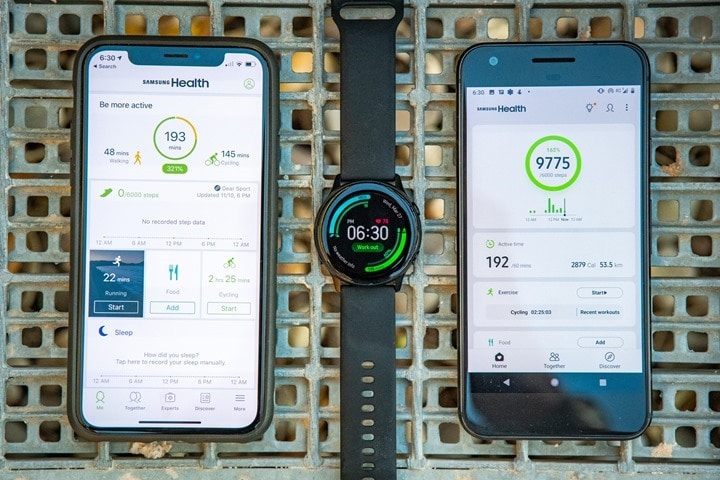
For each of the last three years or so, I've started the review process of a Samsung GPS watch, all variants of either the Samsung Galaxy line or Samsung Gear lineup. And each of those years I get a few workouts into it and remember what a complete nightmare it is to get data off of the darn watch. Or more specifically, out of the Samsung app that accompanies the watch. This year with the Samsung Galaxy Watch Active, the story is no different.
See, while most companies make it relatively painless to download completed workout files – Samsung takes the opposite approach. They make it darn near impossible, depending on whether you're on iOS or Android. And even on Android getting a file with HR data included is tricky business too. When I'm talking files, I'm specifically talking about something you can download to your computer and then load onto various fitness apps/platforms. Common file formats like .FIT, .TCX, and even .GPX. While .CSV is considered a file format, it's not a fitness one. No worries, that's not a concern here since Samsung doesn't use .CSV anyway for S Health.
Note that this post is definitely not a review of the Galaxy Watch Active (or S Health aka Samsung Health). It's basically just a quick how-to guide on a single topic that seems to perplex many. My actual review of the Samsung Galaxy Watch Active will come late next week, after I finish collecting a bit more data.
Now, a super brief graphical overview of how the Samsung watches work from a fitness file standpoint.

Got all that? Good, we'll probably refer to it a few times.
If Paired to Android Phone:
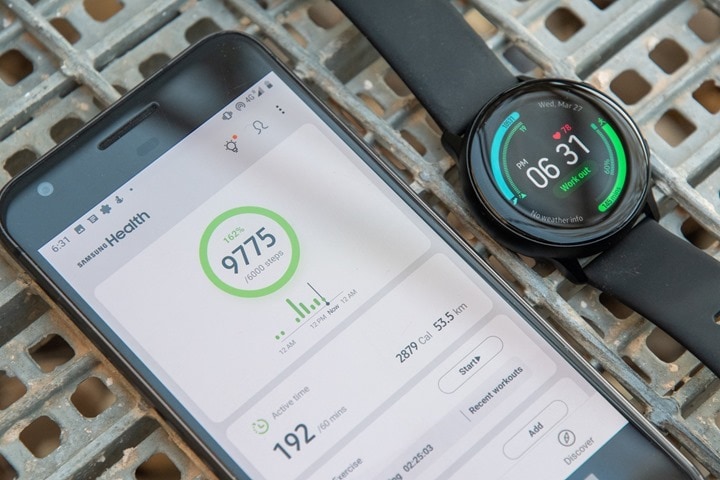
As one might expect, the Samsung watches generally have more features when paired to an Android phone than not. In fact, that even gets taken a step further for Galaxy phones vs a vanilla Android phone in certain features. But for the purposes of exporting data out of the watch, it's equal.
You've got two and a half basic ways to go about it:
A) Use the .GPX export option from within Samsung Health: This mostly works fine for doing it one file at a time, except one catch: It doesn't export your heart rate data. While the .GPX file format supports HR data just fine, Samsung elected not to put it in there. If you don't care about that – then by all means, use this option.
B) Use 3rd party sync tools to export data from app to interwebs: There's two main options here I'm aware of – FitnessSyncer and SyncMyTracks. Both do basically the same thing: They get your data off of the phone and up to 3rd party sites like Garmin Connect, Strava, Dropbox, and countless others. Once you use these apps, your data is free as a bird. And it'll include HR data too (at least with FitnessSyncer that I've tried).
C) Sync to Strava (this is the half option): In this option you can enable Strava sync for your workouts, and then download that file after the fact from Strava. Be aware that this only works for data synced directly from the watch to your Android phone and then to Strava. If you're looking at this option from the perspective of an iPhone user, it won't work (more on that in a moment).
In addition to these methods, there's also the nuclear option: GDPR. Samsung does allow you to submit a request for all your data that they have on their platform (synced to the Samsung Health Cloud). The challenge there is that once you stumble through their automated process, you get a ZIP file back with a crapton of mostly useless JSON files. They aren't in a fitness format that any site would understand. So you'd have to write a parser to undo that situation. Thus, like a nuclear bomb – it technically works but is also a complete mess.
So, let's just do a quick run-through of those first three options. Just for the fun of it.
Export as GPX: First up, using the .GPX sport feature within a given workout. To do this you'll go to the activity you want to export and then open it up. Slide all the way to the bottom and then select 'Export as GPX file'.
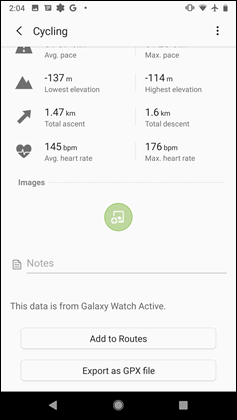
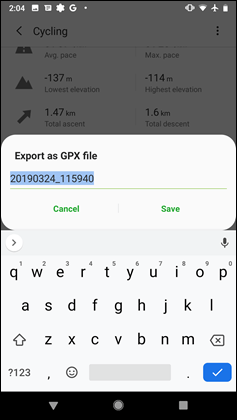
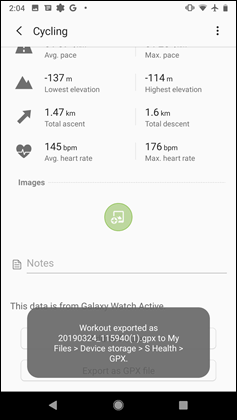
After that, it'll ask you what you want to do with it. I'd just e-mail it to yourself and then upload it manually to wherever you want.
3rd Party Sync- FitnessSyncer: In this scenario you need to create an account (it's free) for FitnessSyncer. This is a website that connects to basically every platform on earth. In the case of Samsung, they connect via the local Samsung Health app on your phone – rather than to Samsung's Cloud – hence why you need to run the app on your phone. Once you've got an account created, go ahead and install the Android app (you can also create an account from within the app too):
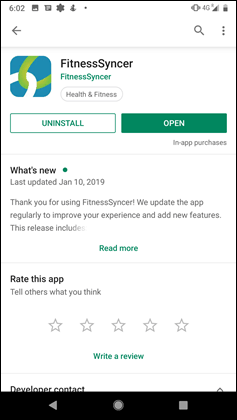

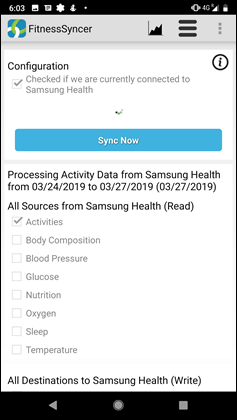
Then, on the options setup a sync inbound from Samsung Health. You can do this on the smartphone app or on the site. I like the site because I like desktop web browsers. This will take the data from Samsung Health and make it available within FitnessSyncer's platform:

Next, you'll need to export that data somewhere. FitnessSyncer has basically two things it does in life: Pull data in, and push data out. You just tell it where to push and pull to.
Now here's the thing: I strongly recommend you don't get fancy here. Just export it out to one place for now. And don't set up multiple imports. The last time I did that my house of cards fell down. Likely my fault, but just keep it simple for now. Then later on when you get cocky you can break your own house and it won't be my fault.
In my case, I set it up to sync to Dropbox, as that's super easy for me to manage my files there:

You can add filters and such for dates or titles or anything you want. Again – keep it simple until you've got it working.
And with that, press that sync button and off it goes. Then press the sync button next to Dropbox as well:
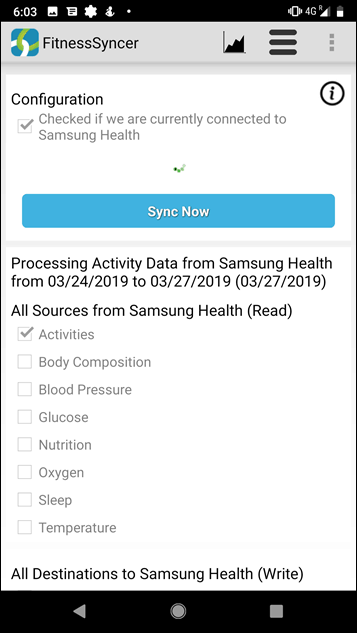
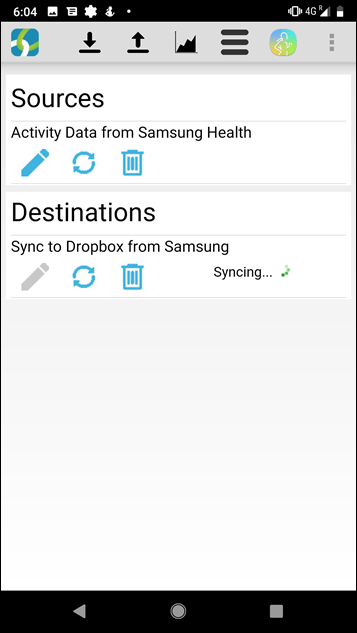
A few moments later you've got a folder full of workout files to upload wherever you want – inclusive of HR and GPS data:

Note that the Samsung watches don't natively connect to sensors, so that type of data export isn't really an issue here.
Strava Sync: Finally, if you want to sync to Strava, that's quick and easy too. To enable that go into the '…' menu in the upper right corner, select Settings, then select 'Connected Services', and then choose Strava. It'll ask you to authenticate once, after which new workouts will then be synced there:
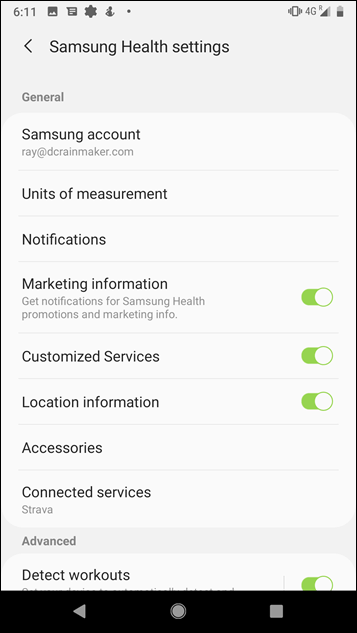
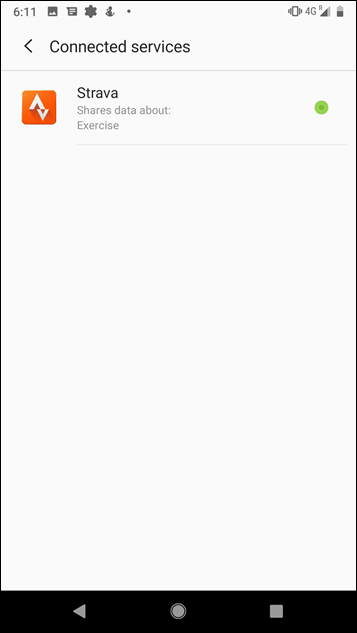
Do note that there are some oddities however between the data from Samsung Health GPS export versus that of using the Strava sync option, including distance/time/elevation, which does, in turn, impact some Strava effort metrics.
Interestingly, there used to be way more options for platforms Samsung sync'd to, but they're all gone these days. It's just Strava, and only Strava. Either way, at least if you're on an Android phone you can get your data out. Sometimes one escape route is better than none.
If Paired to an iPhone:
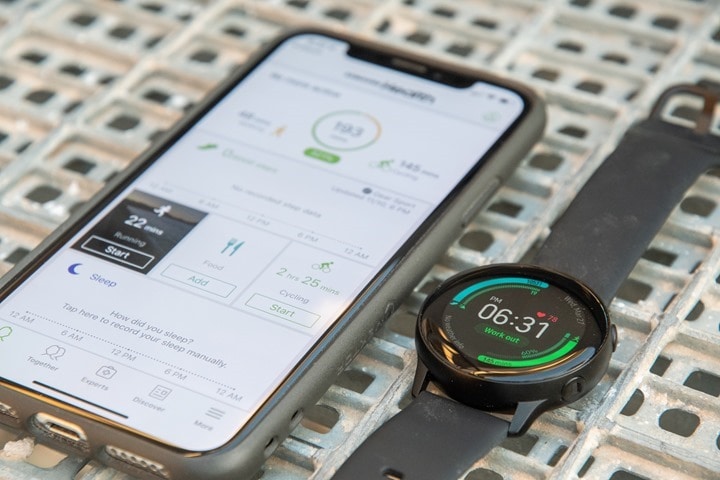
I'm going to be the bearer of bad news here – but the simple reality is that without an Android phone you won't be able to download any workout data files from your device. At least if you recorded that activity using the native Samsung workout apps on the Galaxy watch. That data goes into Samsung's Samsung Health app on your iPhone and then up to Samsung Health cloud. However, there's no mechanism on the iOS app to download workout files (even partial ones).
In fact, unlike the Android app, you can't even connect the Samsung Health to Strava. It's simply not an option. Just like there is no option to export data as .GPX files like there is on Android. This has been this way for years, since the days of the Gear Sport and prior.
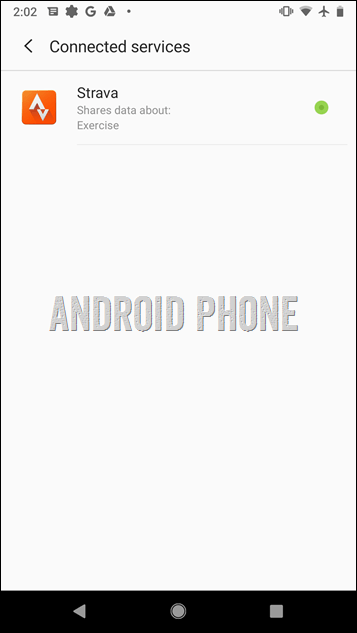
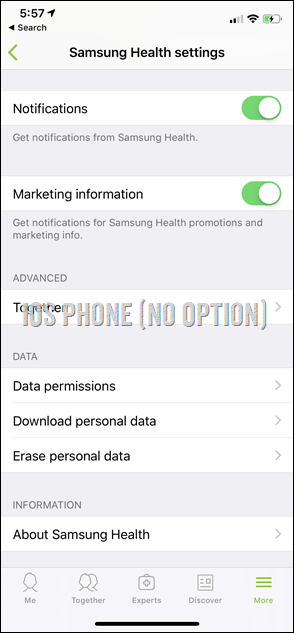
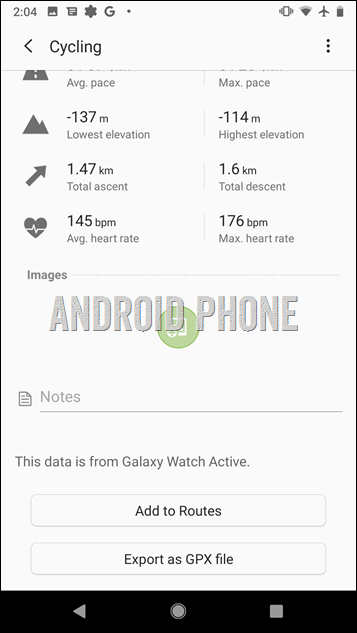
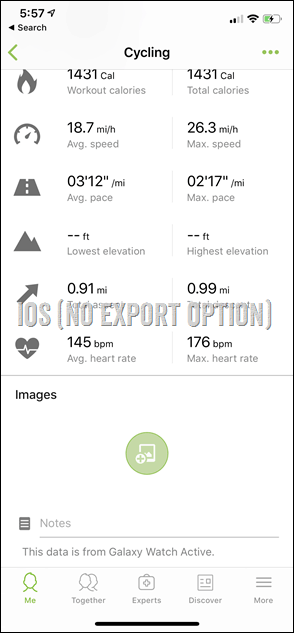
The *only* option you've got that doesn't involve an Android phone is the GDPR request to request all your data. But as I outlined in more detail up above in the Android section, that just gives you a pile of mostly useless non-fitness formatted JSON files. Sure, the data is in there, but good luck doing anything with it unless you spend a bunch of time writing scripts to manually parsing that data. And if there's anything I've learned in doing this more than a decade it's that when it comes to parsing fitness files: It's really hard.
I've no doubt someone on GitHub probably has a parser somewhere for these files. But it often takes companies years of work to get their files perfect and compliant according to standards. It's the edge cases that kills them. Silly things like how to deal with data drop-outs in tunnels or weird 0,0 lat/long type bugs. Things that most DIY parsing scripts won't likely have handled properly. Which isn't a slam on them – it's a slam on Samsung: Just offer your .GPX export option on iOS. Or, get all modern and offer .TCX or .FIT like everyone else.
Your only hope – using a 3rd party app to record workouts: For iOS users, this is really the best bet. This allows you to record a workout using an app like Endomondo, which supports proper data syncing as well as exporting via a desktop web browser. They sync to plenty of platforms, well beyond just Strava. The only downside here is that you won't get the data into Samsung Health as a cohesive workout picture. But hey – it doesn't sound like you care about that anyway.
I know that DesFit used Endomondo for the vast majority of his review he just released with really good success. I'm planning on using it for the remainder of my workouts for this review. As an iOS user, using it or another fitness app is frankly your best option for file exporting.
Got an Android friend? Now, if you do have a friend on Android, there's some opportunity here if you want to keep using the native workout app on the Samsung watches. Oh, and I mean, like, a really good friend.
See, the iPhone app syncs up to Samsung's Health cloud automatically. So all your data is actually there. It's just that you can't do anything with it as an iOS user.
However, if your friend installs on their Android phone the Samsung Health app, and then you log in with your account – then you can sync your workouts automatically down to that phone and export from there. Same goes for FitnessSyncer on the Android phone after installing S Health.
In fact, that's mostly what I'm doing today. My Galaxy Watch Active is paired to my iPhone, and then it syncs via the cloud to my secondary Android phone, where I can then export the data out via FitnessSyncer. It's hardly ideal, but it's an option – especially if you've got an older Android phone lying around (Fun tidbit though: Samsung Health app won't let you sign-in the first time without a SIM card in the phone on Android).
Lastly – you may be wondering why doesn't Samsung just offer an API on their website and allow apps to access it that way? Well, they do in fact.
It's just that it's not viable cost-wise for companies to use it. First, Samsung charges $10,000 for the initial API access, and then they charge on a per read basis for each transaction. In talking to one company looking at rolling it out, the cost for that small app would likely be over $1,200,000 per year based on the load/demand they get. As you might imagine, that's well into non-starter territory. And I suspect also the reason why we've seen every app but Strava disappear from S Health over the past 6 months.
Got any other ways?
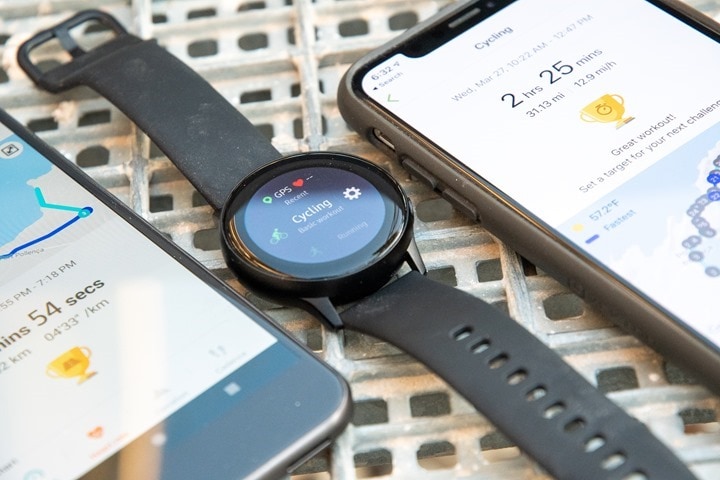
Now – if you've got any other ways to get the data out, especially for iOS users, I'm all ears!
On one hand, some might make an argument that 'Hey, at least Samsung allows you to connect their watches to iOS. What about Apple that doesn't allow you to do that to Android!'. And that's true. But it's also whataboutism. At the end of the day, Apple isn't selling their watches to Android users, and as such, they aren't offering a crappy experience.
Given Samsung's spent money developing not one, but two apps (Samsung Health and the Galaxy watch app) for iOS – they're showing an investment in catering beyond not just Samsung phones but also beyond Android phones. And while one might also argue that 'maybe Samsung will add the export features soon', history illuminates that's simply not the case. Stretching all the way back to 2017 this issue has been present. In fact, it's gotten worse since then. Previously even on Android there were more data sync partners. Now only Strava is left.
In the meantime, I'll keep doing the two-phone and 3rd party app tango to get my data out. Oh – and that final review? Don't worry, still coming up next Friday as promised. After I find a friend with a Samsung Galaxy phone and fly to another country so I can install the previously always available Spotify app on my watch.
With that – thanks for reading!
How To Sync Nike Run App To S Health
Source: https://www.dcrainmaker.com/2019/03/export-data-samsung-watch-galaxy-health-app.html
Posted by: lawsontheast.blogspot.com

0 Response to "How To Sync Nike Run App To S Health"
Post a Comment